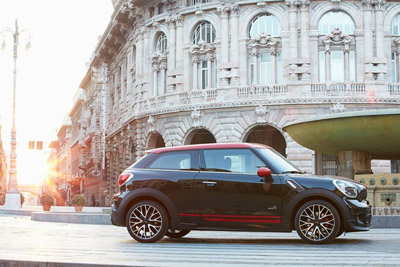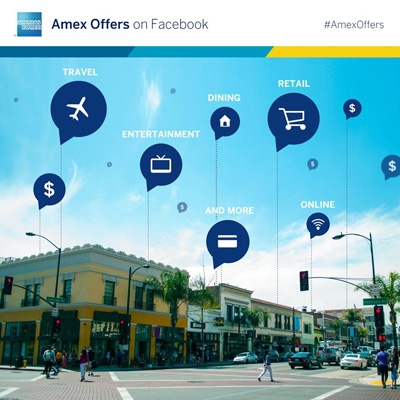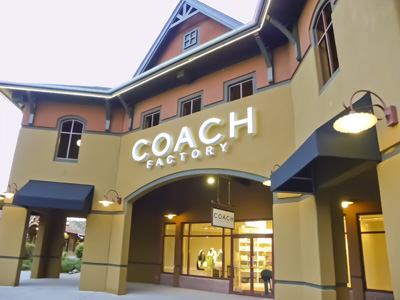 Affluent consumers are contemplating their purchases.
Affluent consumers are contemplating their purchases.
The majority of affluent consumers employ a number of shopping and saving tactics to manage their money, with 52 percent of ultra-affluents regularly comparison shopping.
Luxury marketers often think that affluent consumers want to spend their money as fast as they earn it, but the affluent are actually invested in saving their money. These strategic spending habits call for a revised marketing plan that recognizes that consumers care more than previously thought about what they purchase.
"I think too many luxury marketers think that the affluent and wealthy really get a thrill about making expensive purchases," said Pam Danziger, president of Unity Marketing, Stevens, PA. "They don’t seem to realize that rich people get rich not by spending their money, but by being very careful with money.
"The old idea that 'if you have to ask the price, then you can’t afford it' has been replaced by the wealthy being focused on price and getting the most bang for their buck and sometimes that means asking for a discount, looking to find the lowest price or making strategic brand substitutes to save money," she said.
For Unity Marketing’s “Luxury Has a Brand New Style” report, 1,335 affluent luxury consumers within the top 20 percent of households by income were surveyed in January 2014 about how they manage their money, their attitudes toward luxury and their purchasing plans for different categories. Sixty percent of respondents were women, and 57 percent were between the ages of 45-70.
Spending savvy
Since the recession, affluent consumers have been saving more and spending less. Sixty-one percent of those surveyed save money from their paychecks, while 51 percent invest in a money market or mutual fund.
Financial institutions have the opportunity to market their services to high income individuals who are interested but may not be as aware of saving strategies.
The consumer segments most interested in money-saving strategies when shopping are females ages 35-54. Neither the youngest nor the oldest affluent consumers regularly deploy money saving strategies when shopping.
Across apparel and accessories, beauty and jewelry, ultra-affluent consumers, or those with a household income of $250,000 or more, have decreased their spending since 2011.
There has been a shift in the perception of status symbols, with men choosing brands not for their lofty price point but because the brand fits their identity. For instance, a man may choose a Mini Cooper over a Mercedes-Benz because it fits his personality.
 Mini Cooper
"The #1 danger for heritage luxury brands, like Louis Vuitton, Mercedes, Gucci and the rest, is to think that their brand is too storied that they don’t have to worry about the competition coming from what they consider upstart brands, but what the luxury consumers sees as very compelling indeed," Ms. Danziger said.
"I hear it all the time that such and such a brand 'is not my competition.' Nonsense," she said. "Luxury consumers today have the widest possible range of brands to choose from and many, many times they find that a less exclusive brand offers superior value for the money.
"I’m not saying that the heritage luxury brands need to necessarily reduce price, but they better offer significant and quantitative value to the consumer. They can’t expect the customer to pay a premium just for the brand name anymore."
Saving plan
To appeal to the newly cost-conscious affluent consumer, brands should focus on the value that an item imparts in relation to the price. This is different than discounts, and focuses on the quality and superiority of a good.
Another way to give value without succumbing to discounting is through rebates or cash back. This tactic is employed by American Express, which rewards its consumers for spending.
Mini Cooper
"The #1 danger for heritage luxury brands, like Louis Vuitton, Mercedes, Gucci and the rest, is to think that their brand is too storied that they don’t have to worry about the competition coming from what they consider upstart brands, but what the luxury consumers sees as very compelling indeed," Ms. Danziger said.
"I hear it all the time that such and such a brand 'is not my competition.' Nonsense," she said. "Luxury consumers today have the widest possible range of brands to choose from and many, many times they find that a less exclusive brand offers superior value for the money.
"I’m not saying that the heritage luxury brands need to necessarily reduce price, but they better offer significant and quantitative value to the consumer. They can’t expect the customer to pay a premium just for the brand name anymore."
Saving plan
To appeal to the newly cost-conscious affluent consumer, brands should focus on the value that an item imparts in relation to the price. This is different than discounts, and focuses on the quality and superiority of a good.
Another way to give value without succumbing to discounting is through rebates or cash back. This tactic is employed by American Express, which rewards its consumers for spending.
 American Express offers
Buy one get one discounted offers are also appealing to an affluent audience, since they encourage spending more. However, these offers can go too far. If the deal is buy one get many free and the offer is almost consistently given, consumers will believe that the merchandise at retail is overpriced.
Traditional discounts can be offered, but they need to be used in moderation. Limited time only offers and flash sale sites are ways to clear out merchandise without damaging a brand’s reputation.
An outlet strategy also has to be carefully considered. For example, leather goods maker Coach rapidly expanded its outlet stores, which resulted in the majority of its sales being driven through off-price, which has hurt the brand’s luxury status and ability to price at a premium.
American Express offers
Buy one get one discounted offers are also appealing to an affluent audience, since they encourage spending more. However, these offers can go too far. If the deal is buy one get many free and the offer is almost consistently given, consumers will believe that the merchandise at retail is overpriced.
Traditional discounts can be offered, but they need to be used in moderation. Limited time only offers and flash sale sites are ways to clear out merchandise without damaging a brand’s reputation.
An outlet strategy also has to be carefully considered. For example, leather goods maker Coach rapidly expanded its outlet stores, which resulted in the majority of its sales being driven through off-price, which has hurt the brand’s luxury status and ability to price at a premium.
 Coach outlet store
If the merchandise is not moving at full price, then the pricing strategy for a brand may need to be revisited, since consumers likely think it is overpriced.
Bridging the gap
The study pointed out men’s retailer Suitsupply, which currently operates 39 stores worldwide, as finding a way to meet consumers’ needs on various price points. The brand sells suits off the rack for about $500 and also has made-to-measure lines costing $2,000.
This price range allows men to begin shopping with Suitsupply and experiencing their customer service early and then grow with the brand into its higher end lines as they earn more money.
Consumers are doing more research before making purchases, carefully considering their spending.
The top 10 percent of affluent consumers have adopted a sense of invulnerability following the 2008 recession that has affected how they approach the purchase of luxury goods and services, according to a new survey conducted by YouGov.
Presented to attendees of the Luxury Summit in Naples, FL, April 8, the “2014 Survey of Affluence and Wealth” found that although luxury goods and services have seen sales growth, marketers have encountered troubles when targeting a more confident consumer. In the wake of the Great Recession, the affluent have become more secure and confident in their “shopping prowess” to ensure they remain at the top of economy (see story).
"I am not sure what luxury status means anymore or whether it means anything at all," Ms. Danziger said. "I’ve heard in focus group research that labeling something 'luxury' just means over-priced.
"In this economic environment, where income inequality is evil and the 1 percent are villianized, the idea of conspicuous consumption is giving way to conscious consumption and part of that new conscious consumption equation is buying responsibly," she said. "Not just goods and services that are responsibly produced, but that one can wear, enjoy and participate in responsibly.
"Maybe spending $5,000 on a handbag isn’t a responsible choice anymore when perfectly good quality and stylish handbags are available at $500. For the vast majority of consumers today $500 for a handbag is quite expensive. So even if one can afford a $5,000 handbag, that isn’t necessarily the responsible choice in today’s socio-political and economic environment."
Final Take
Sarah Jones, editorial assistant on Luxury Daily, New York
Coach outlet store
If the merchandise is not moving at full price, then the pricing strategy for a brand may need to be revisited, since consumers likely think it is overpriced.
Bridging the gap
The study pointed out men’s retailer Suitsupply, which currently operates 39 stores worldwide, as finding a way to meet consumers’ needs on various price points. The brand sells suits off the rack for about $500 and also has made-to-measure lines costing $2,000.
This price range allows men to begin shopping with Suitsupply and experiencing their customer service early and then grow with the brand into its higher end lines as they earn more money.
Consumers are doing more research before making purchases, carefully considering their spending.
The top 10 percent of affluent consumers have adopted a sense of invulnerability following the 2008 recession that has affected how they approach the purchase of luxury goods and services, according to a new survey conducted by YouGov.
Presented to attendees of the Luxury Summit in Naples, FL, April 8, the “2014 Survey of Affluence and Wealth” found that although luxury goods and services have seen sales growth, marketers have encountered troubles when targeting a more confident consumer. In the wake of the Great Recession, the affluent have become more secure and confident in their “shopping prowess” to ensure they remain at the top of economy (see story).
"I am not sure what luxury status means anymore or whether it means anything at all," Ms. Danziger said. "I’ve heard in focus group research that labeling something 'luxury' just means over-priced.
"In this economic environment, where income inequality is evil and the 1 percent are villianized, the idea of conspicuous consumption is giving way to conscious consumption and part of that new conscious consumption equation is buying responsibly," she said. "Not just goods and services that are responsibly produced, but that one can wear, enjoy and participate in responsibly.
"Maybe spending $5,000 on a handbag isn’t a responsible choice anymore when perfectly good quality and stylish handbags are available at $500. For the vast majority of consumers today $500 for a handbag is quite expensive. So even if one can afford a $5,000 handbag, that isn’t necessarily the responsible choice in today’s socio-political and economic environment."
Final Take
Sarah Jones, editorial assistant on Luxury Daily, New York
